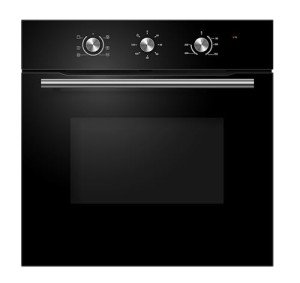One Key Trick Everybody Should Know The One Integrated Oven Trick Every Person Should Learn
The Integrated Oven: A Comprehensive Guide
In modern kitchen areas, the pattern toward integrating appliances with cabinets to create a smooth look has actually gotten significant traction. Amongst these important kitchen tools, the integrated oven sticks out as a favored alternative for lots of property owners and culinary enthusiasts. This post checks out the benefits, features, and factors to consider connected with integrated ovens, as well as answering typically asked questions.
What is an Integrated Oven?
An integrated oven is a type of built-in oven that is designed to be flush with kitchen cabinets. Unlike freestanding designs, which often stand apart by themselves, integrated ovens are concealed or partly hid, providing a smooth and cohesive aesthetic to the kitchen space. These ovens are available in various styles, including single, double, and steam ovens, and can be integrated with racks and cabinets for improved storage.
Benefits of Integrated Ovens
Integrating an oven into your kitchen design can provide many benefits. Here are some benefits of picking an integrated oven:
Space-saving Design:
- Perfect for smaller sized kitchens, integrated ovens optimize area usage, leaving more room for other appliances or storage.
Visual Appeal:
- The flush installation produces a streamlined, modern look that can elevate the general ambiance of a kitchen.
Customizability:
- Integrated ovens can often be tailored to match cabinetry or to consist of distinct features such as pull-out shelves.
Boosted Functionality:
- Many integrated ovens come equipped with innovative cooking innovation, such as clever programs and convection heating, enhancing cooking outcomes.
Increased Property Value:
- An integrated oven can improve the worth of a home, interesting potential buyers who have an interest in modern, well-appointed cooking areas.
Choosing the Right Integrated Oven
When selecting an integrated oven, numerous factors must be thought about to make sure that the model fits your cooking needs and kitchen layout. Below are some key factors to consider:
Size and Capacity:
- Check the dimensions of your kitchen space. Requirement sizes usually range from 60cm to 90cm in width, with capacities varying based on how numerous dishes you usually prepare.
Kind of Oven:
- Decide in between standard, convection, and steam ovens. Stove are popular for their even heat distribution, while steam ovens keep wetness for better-flavored dishes.
Functions:
- Look for functions that match your cooking style. Some performances to consider include:
- Self-cleaning choices
- Smart technology integration
- Multiple cooking modes
- Security functions
Energy Efficiency:
- Opt for energy-efficient designs that take in less electrical power while providing high efficiency.
Spending plan:
- Integrated ovens can be found in numerous cost ranges. Determine your budget plan while thinking about the durability and toughness of the home appliance.
Feature
Recommended Model
Description
Self-Cleaning Function
Yes
Saves time and effort maintaining cleanliness
Convection Cooking
Yes
Improves heat distribution for even cooking
Smart Technology
Optional
Enables control from mobile gadgets or voice assistant
Numerous Cooking Modes
Yes
Versatility in cooking various dishes
Energy Rating
A/A+
Ensures lower energy usage
Installation and Maintenance of Integrated Ovens
Correct installation and maintenance are important for optimum oven performance. Here are some actions to consider:
Installation Steps
- Preparation: Ensure you have all the needed tools and products before beginning the installation.
- Procedure the Custom Space: Confirm the fit of the oven against the cabinetry.
- Connect to Power Supply: Consult an electrical contractor for safe electrical connections.
- Leveling: Ensure the oven is level to prevent cooking disparities.
- Connect Cabinet Panels: If needed, connect decorative panels for a personalized look.
Maintenance Tips
- Regular Cleaning: Frequent cleaning prevents food buildup and makes sure the oven runs effectively.
- Look for Damage: Inspect the door seals and interior for signs of damage regularly.
- Service Regularly: Schedule expert maintenance to preserve effectiveness and performance levels.
- Follow Operating Instructions: Always stick to maker standards for operation and maintenance.
Often Asked Questions (FAQs)
What is the distinction between a built-in oven and an integrated oven?
While both types are designed to suit kitchen cabinetry, built-in ovens can stand out a little, while integrated ovens sit flush with surrounding cabinetry.
Are integrated ovens more costly than conventional ovens?
Generally, integrated ovens can be more costly due to the design and features that accommodate a smooth build into the kitchen.
Can I replace my existing oven with an integrated oven?
Yes, however guarantee to think about the size and any modifications needed for your kitchen cabinetry and kitchen design.
For how long do integrated ovens usually last?
With appropriate maintenance, integrated ovens can last anywhere from 10 to 15 years or longer.
Do integrated ovens need special installation?
Integrated ovens often need professional installation to guarantee they are fitted correctly with suitable connections and safety measures.
Integrated ovens use an advanced and efficient service for modern-day cooking areas, boosting aesthetic appeal while offering advanced cooking capabilities. By carefully assessing built in oven hob and hood package , setup, and upkeep, property owners can choose an integrated oven that best matches their cooking needs and design choices. With the numerous styles and types offered, anyone can attain a functional area that complements their cooking way of life, making the integrated oven an excellent financial investment for any home.
